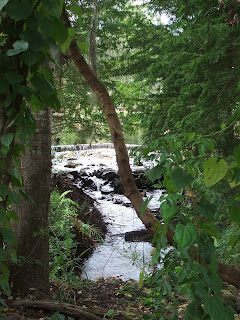Everyone raised in St. Petersburg has heard of this 3,700-acre expanse of
green along the western shore of Tampa
Bay , and has seen at least that part of
its shoreline which is visible from Gandy
Bridge Weedon Island
For any non-Floridian readers out
there, mangroves are estuary trees which grow in areas that are, more often
than not, submerged in salt water anywhere from several inches to several feet
deep. They sit atop above-ground roots, as you can tell from this picture that was
taken when the water level was lower than normal:
The shallow aquatic world around
mangrove roots is home to crabs and crayfish and provides a steady food supply for droves of raccoons. Herons also come here to feed:
There is much more to Weedon Island
That interior is teeming with a
variety of wildlife, including endangered species like the gopher tortoise. 4½ miles
of hiking trails thread through Weedon
Island, leading to two
Although it is called an island,
Weedon is actually a peninsula, tethered to Pinellas County Gandy Boulevard . A two-lane road across
that isthmus is what takes you there. When I was a child, the road was dirt and
dead-ended near a dock. The bulk of Weedon was known as Weedon Island State
Preserve, but unless you had a kayak in tow, there was really nothing to do
here.
These days the land is leased to Pinellas County
To reach the preserve, turn south
onto San Martin Boulevard
from Gandy Boulevard ,
or east onto 83rd Avenue
from 4th Street ,
and follow the signs. Admission is free. Whether you live in the Tampa Bay
Happy Trails!











